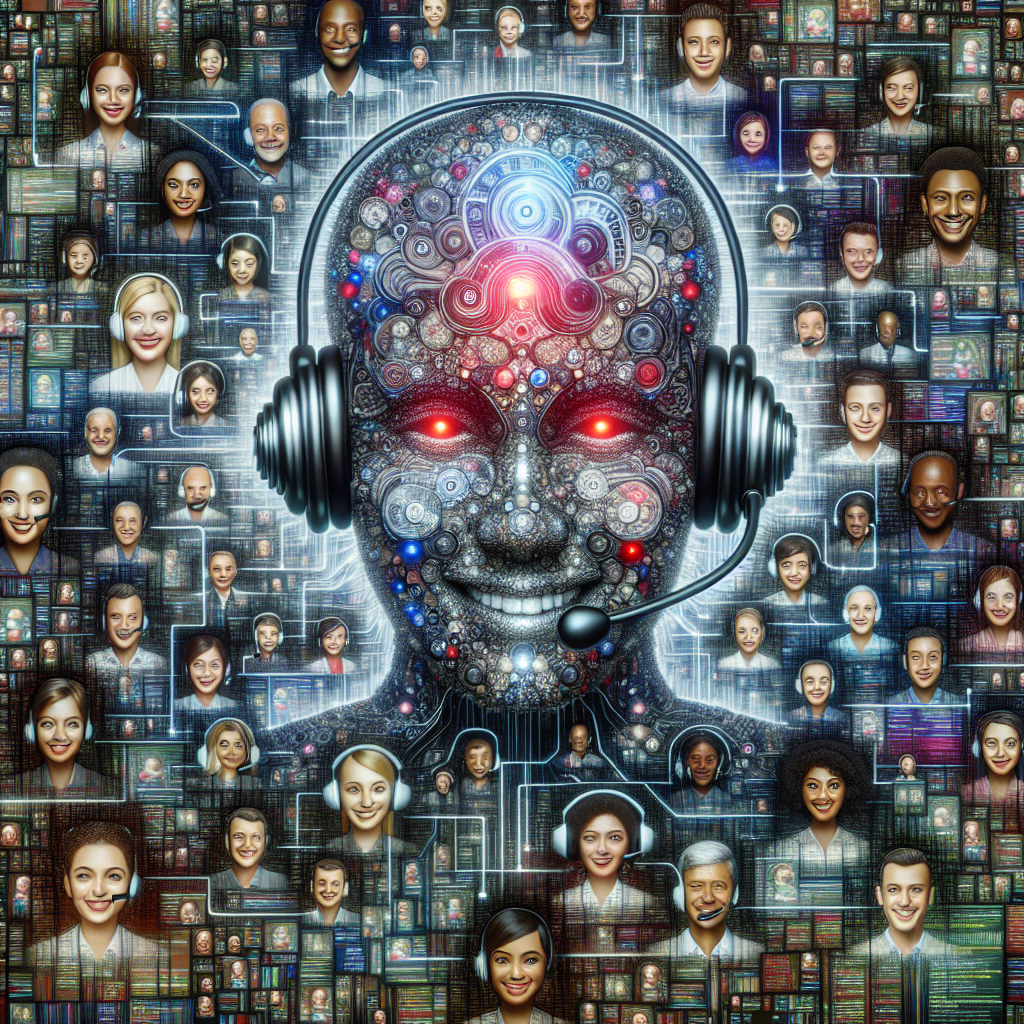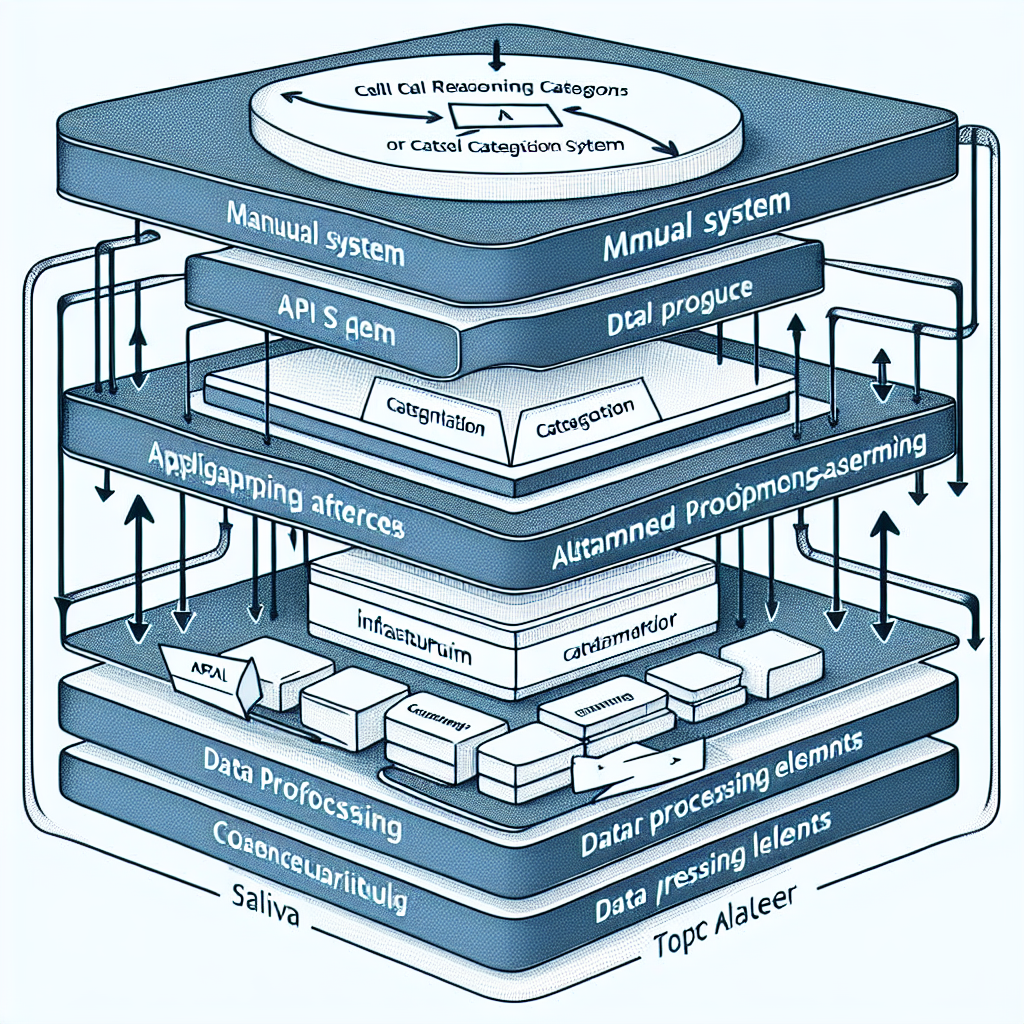
In today's interconnected and digitally advanced world, effective customer service is crucial. With the onset of automation, one such feature that is gaining significant recognition is the automated call reason classification. A crucial part of modern customer service systems, automated call reason classification allows businesses to automatically categorize the reason for customer calls using advanced machine learning and artificial intelligence techniques.

Automated call reason classification not only improves operational efficiency but also enhances customer satisfaction by delivering faster and more personalized responses. It eliminates the need for customers to traverse through long Interactive Voice Response (IVR) systems as it determines call intent instantly and connects the customer to the most suitable agent or even resolves the query with an automated response. Moreover, this system helps in better query resolution, predictive analysis, and workforce planning due to its ability to provide real-time insights and analytics.
Service categorization, traditionally, has been challenging due to various factors: volume of calls, variety in caller intent and ambiguity in customer language, to name a few. An efficient automated call reason classification system successfully addresses these challenges. By applying Natural Language Processing (NLP) and machine learning algorithms, these systems can analyze call content, context, and sentiment to accurately identify the reason for customer calls.
With easier call routing, improved customer experience, enhanced insights, and reduced operational costs, automated call reason classification has become an indispensable part of today's customer service landscape. Businesses that incorporate and efficiently leverage this technology are far more likely to gain a competitive edge in this customer-centric era.
Automated call classification systems, powered by AI, are revolutionizing customer service by automatically identifying the reasons for customer calls. These systems remove the manual element from service categorization, significantly minimize human error, and streamline the caller experience. Artificial Intelligence in customer service is not new, yet its application in call reason classification adds a new level of efficiency.
There are several key technologies that make automated call reason classification possible. Foremost among these technologies is Natural Language Processing (NLP), which is a branch of AI that helps computers understand, interpret and manipulate human language. It involves machine translation, sentiment analysis, named entity recognition, and topic segmentation, making it critical in understanding the reasons for customer calls based on the language used.
Machine learning algorithms form another crucial cog in the automation machine. Specifically, unsupervised and supervised learning algorithms are used in combination with NLP to ensure accurate call categorization. These algorithms learn from each interaction, continuously improving and adapting to ensure maximum accuracy, making automated call classification systems better with increased use.
Integration of these technologies helps create intelligent call classification systems capable of achieving accurate and efficient service categorization. This approach not only increases efficiency and customer satisfaction but also frees customer service representatives from the cumbersome task of manual categorization; allowing them to focus more on solving customer problems. The end result is a more fluid, efficient, and streamlined customer service experience that benefits both consumers and service providers.
In conclusion, with the integration and advancement of AI technologies like NLP and machine learning, the potential for automated call reason classification can only grow. These AI-powered call classification systems are poised to become the new norm in customer service, setting a high standard for service categorization in the future.
Integrating automated call reason classification technology into your existing telecom infrastructure can greatly enhance your customer service by improving service categorization. Not only does it provide systematic routing to appropriate departments, but it also helps in gauging customer sentiment and tracking key issue trends. At the core of this technology is Natural Language Processing (NLP), a branch of AI focused on voice recognition and sentiment analysis.
However, implementation and integration of these systems is not always a straightforward process. There's no one-size-fits-all approach, as the complexity of integration largely depends on the intricacy of your existing customer relationship management (CRM) system and customer service tools.

Common CRM platforms like Salesforce, Zoho, and Microsoft Dynamics generally have existing API's and SDKs to facilitate simpler integration. These APIs allow the AI-powered call classification system to swiftly process, categorize, and assign every single customer call. Although these applications are robust, customization may be necessary in order to achieve optimal result.
In custom implementations, the integration process begins with an examination of existing service workflows. This is aimed at understanding common customer issues and determining the best routing path for these calls. After this, NLP models are trained and the system is tested thoroughly before full deployment.
It is crucial to continually evaluate your system performance once integrated. Regular evaluation and tweaking of the automated call classification algorithm is vital to ensure optimal call routing and improved customer service over time. Understanding the unique patterns and trends of your own calls will allow further training and finetuning of your system. Therefore, it represents adaptive customer service systems growing and learning in response to customer behavior.
Lastly, data privacy and security considerations should always be at the forefront when integrating operator-sensitive systems, like automated call reason classification. It is pertinent to ensuring the privacy of customer interactions, and companies must strictly adhere to data protection regulations.
In recent years, the practice of automated call reason classification, an AI-powered technique that cuts the chase and quickly identifies the reason for a customer's call, has been recognized as an instrumental tool in enhancing service categorization and augmenting customer satisfaction. This tool has exhibited notable success in myriad industries, such as healthcare, finance, and retail, to name but a few. Let's look at a few case studies that demystify this innovative approach.
Firstly, in the field of healthcare, automated call classification has truly revolutionized service delivery. Take the case of a major hospital chain that used machine learning algorithms to categorize incoming calls, thereby improving the efficiency and speed of their services. The system was able to accurately classify some general queries, such as "appointment scheduling" or "billing questions", freeing up valuable time for their call center staff to handle more complex issues. Through this, the hospital realized a significant reduction in call waiting time and an increase in customer satisfaction ratings.
In the finance industry, too, the capability of automated call reason classification to analyze and categorize calls based on their reason has proven to be transformative. One banking institution experienced notable improvements in their service delivery following the implementation of this system. By efficiently sorting calls into categories like "loan inquiries" or "account issues", they optimized their staff's time and were able to resolve issues faster. In consequence, customer satisfaction improved markedly, and there was a substantial decrease in complaints.
Last but not least, the retail sector has reaped immense benefits from automated call classification. A globally recognized retail brand implemented this technology to enhance their customer service experience. By understanding the purpose of a call within the first few seconds, the system was able to direct calls to the right department and decrease holding times. This considerably enhanced the customer's experience and gave the brand a competitive edge in the highly volatile retail industry.
In summation, these varied real-life applications of automated call reason classification distinctly illustrate the potential efficiencies, time-savings and customer service enhancements that can be realized across different industries.
In light of our expanding digital era, customer service is riding a wave of transformation. One of the most promising advancements is Automated Call Reason Classification. This automated process, powered by AI and Machine Learning, enhances the sorting of consumers' call purposes, thus streamlining the service process. But let's delve deeper into what the future of automation in customer service might hold.

Beyond simply classifying the nature of a phone call, future AI systems could develop a deeper understanding of the nuances of consumers' issues. Providing context-appropriate responses and recommend solutions to customer challenges would boost their satisfaction rate. Emotion-based categorization is one of the fascinating frontiers in AI technology, where machine learning algorithms analyze the tone, word choice, and emotional state of a caller to better tailor the service experience. This emotion AI is perfectly exemplified in applications such as Affectiva's Emotion AI.
Furthermore, the increasing use of natural language understanding (NLU), a sub-discipline of artificial intelligence that focuses on machine reading comprehension, could further refine call classification. AI equipped with NLU could eliminate inaccuracies often found in keyword-based sorting, instead understand caller queries just like humans would. To read more about how NLU works, take a look at this informative article on the subject.
A final innovation coming our way is the further integration of automated classification systems with other customer service facets, such as live chat, email support, or social media customer service. By cross-referencing categorized calls with other types of customer interaction, companies can gain a holistic understanding of customer issues and patterns. This would lead to more effective problem-solving and an improved customer service experience.
The future of Automated Call Reason Classification is exciting. As technology matures, this AI-powered approach promises to make service categorization faster, more accurate, and most importantly, more personalized for customers.
As businesses grasp the growing importance of a customer-centric approach to remaining competitive, their reliance on tools such as automated call reason classification starts to increase. As discussed in this article, these solutions offer a plethora of benefits - chief among them being efficiency improvement and potential cost reductions.
Organizations are at liberty to exploit vast volumes of data obtained from calls by classifying this information automatically. Consequently, they gain the ability to understand customer issues more comprehensibly and resolve them effectively, resulting in heightened customer satisfaction and loyalty. According to recent statistics, a satisfied customer is an invaluable asset, as they tend to use more services, bringing in more revenue.
Automated call reason classification not only attenuates the need for manual intervention but also improves service categorization. When calls are classified with machine learning, agents are presented with a comprehensive view of a customer's problem before the conversation even begins. This saves time, prevents misunderstandings and ensures a great customer experience.
Moreover, introducing such technology proves beneficial to the company internally. It streamlines internal processes, permits performance monitoring and analysis, and grants invaluable insights into areas for improvement and growth.
In the face of a dynamic and highly competitive market environment, harnessing the power of automated call classification emerges not as an option, but a strategic necessity. It is a crucial investment that can help organizations leverage the power of data analytics, personalize their customer interactions, and ultimately remain customer-centric in their operations.
With a clear understanding of the importance and advantages of embracing call classification automation, businesses are better equipped to thrive in today’s customer-centric culture. Remember, staying competitive is no longer about just having the upper hand over rivals; it's about being fully in tune with your customer's voice and needs.Here are some pointers on how to do this effectively.
Start your free trial for My AI Front Desk today, it takes minutes to setup!








